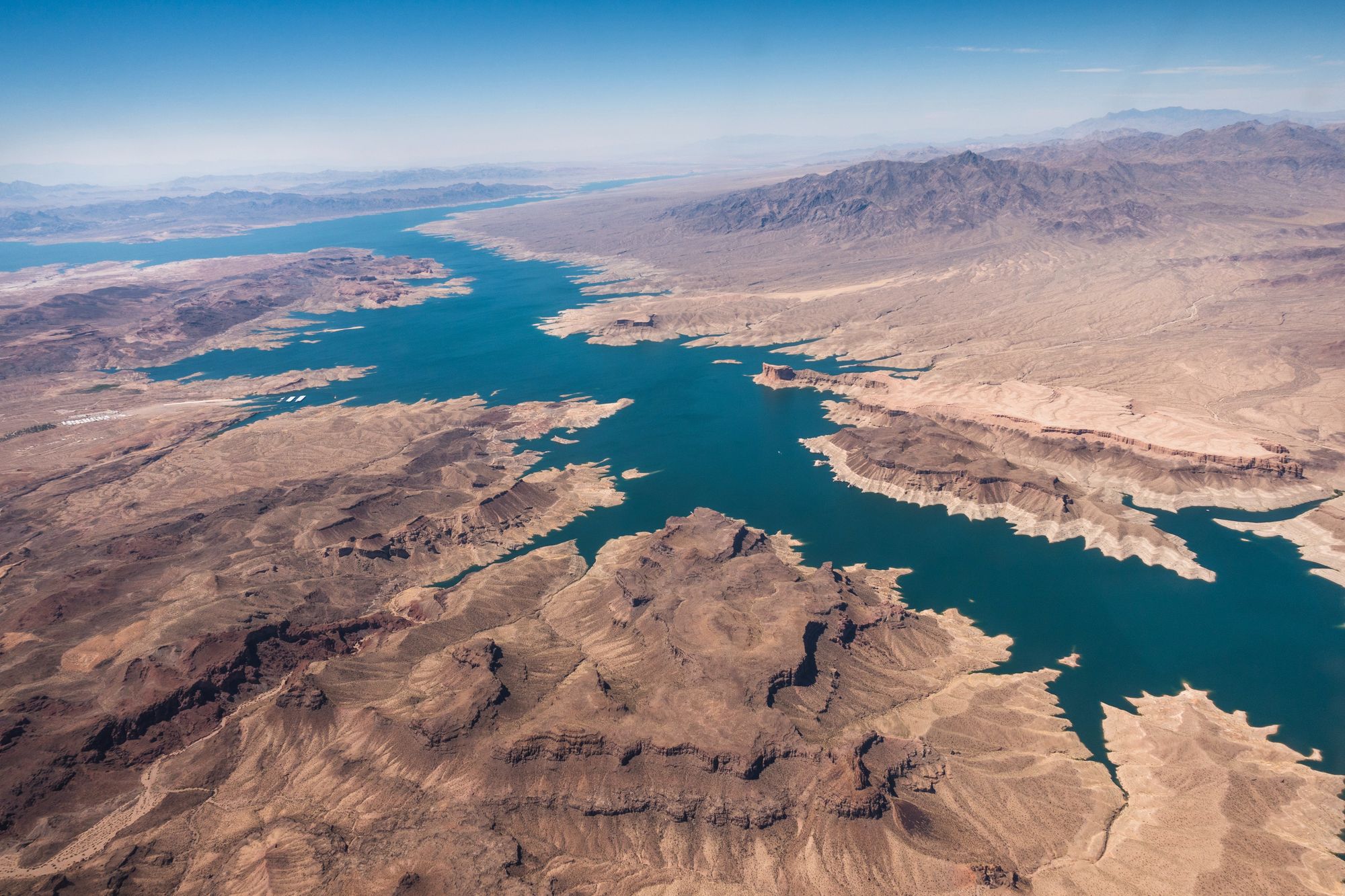
Western U.S. snowpack and reservoir storage update; new drought numbers are in

Considering the recent flow of moisture toward the western U.S. from the Pacific (atmospheric river events), let's check in on how the water situation looks presently, particularly the Colorado River system.
Just after Christmas, a series of atmospheric rivers brought dangerous amounts of rain and snow to California during a 3-week period. Some of that moisture was able to spread across other western states including Nevada, Arizona, Utah and Colorado.
According to NOAA/NIDIS, "Eighty percent of a full seasonal snowpack was deposited in California during these storms. Statewide, precipitation over these 3 weeks was 11.2 inches, which is 46% of a full water year."
Now that the action has slowed, let's see where the drought numbers are currently. This is the latest drought monitor released today from data collected through Tuesday.

Yes, there are still parts of the west in drought, despite the incredible amounts of water. That goes to show how much of a deficit the West has been in for a very long time. It would take weeks and weeks of additional moisture to remove the drought from the West.
Let's take a look at the percent of normal precipitation received in the past three years (since this drought period really took off), and this does include the recent moisture, yet, California and the West are still dry relative to normal for that period.

For parts of northern California and southern Oregon, the deficit is still well more than 20 inches behind normal for the past three years.
Let's not take away from the progress made. Here is how much the drought situation has improved in the past two months, which is positive news!

Let's turn to snowpack across the West. Here is a river basin specific percent of normal water contained in the snowpack.

Overall, that picture isn't bad, a lot of basins are well within a normal range, or higher for the date. I'd like to see snow hit the northern mountains, especially Montana and the Sangres of Colorado to help the Arkansas Basin. Colorado in total is currently 128% of normal snowpack.
The problem is, this is a current snapshot - we need to maintain moisture through April in order to keep these basin maps looking so positive. If we shut things down too quickly in the snow department, the basins will end up well below average across the Rockies.
Looking at just the Colorado River Basin, the water supply forecast is shown here.

So, that's our snow-water reservoir perspective, running near normal in a lot of cases so far this season, but let's turn now to actual water storage in reservoirs across the West; it'll take more than an average season to supply many of the historically low reservoirs in the system.
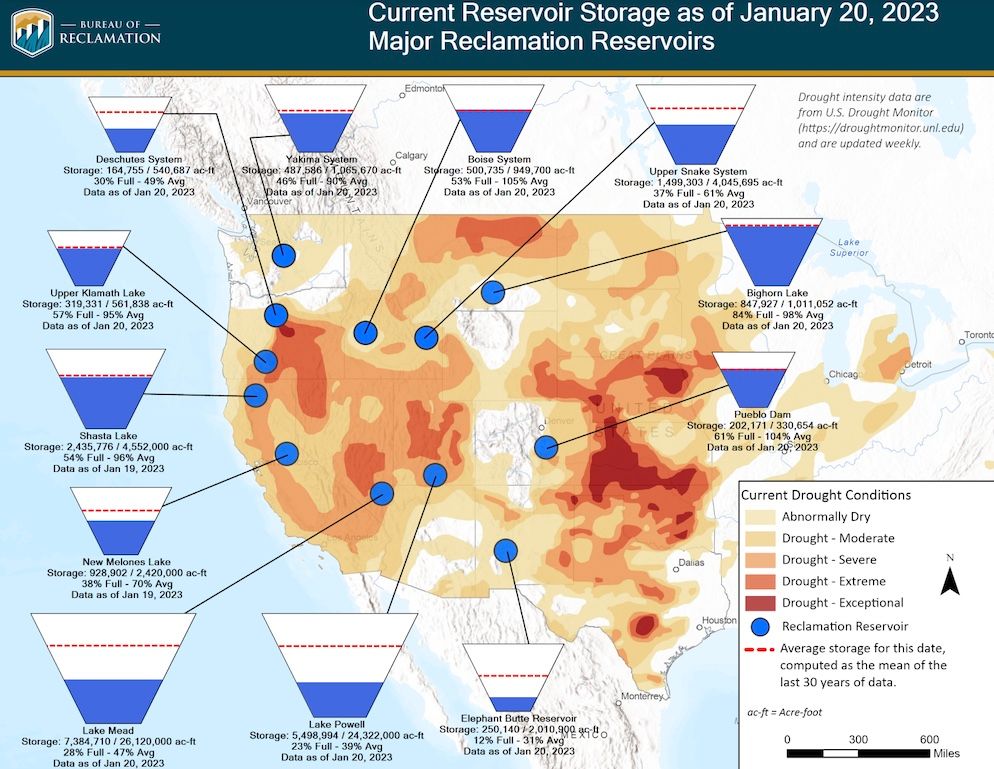
There are some reservoirs in good shape realtive to normal, but many are running very low. That map above is across the West, let's turn to the Colorado River Basin again, this time in terms of reservoir storage.

Many of those reservoirs are running quite low. Let's specifically look at Lake Mead and Lake Powell. Yes, these are gaining some water due to the recent wet pattern, but look at the current status of each, both well below historical norms and lowest levels on record. (Lake Mead has data back to the 1930s, Lake Powell to the 1960s).
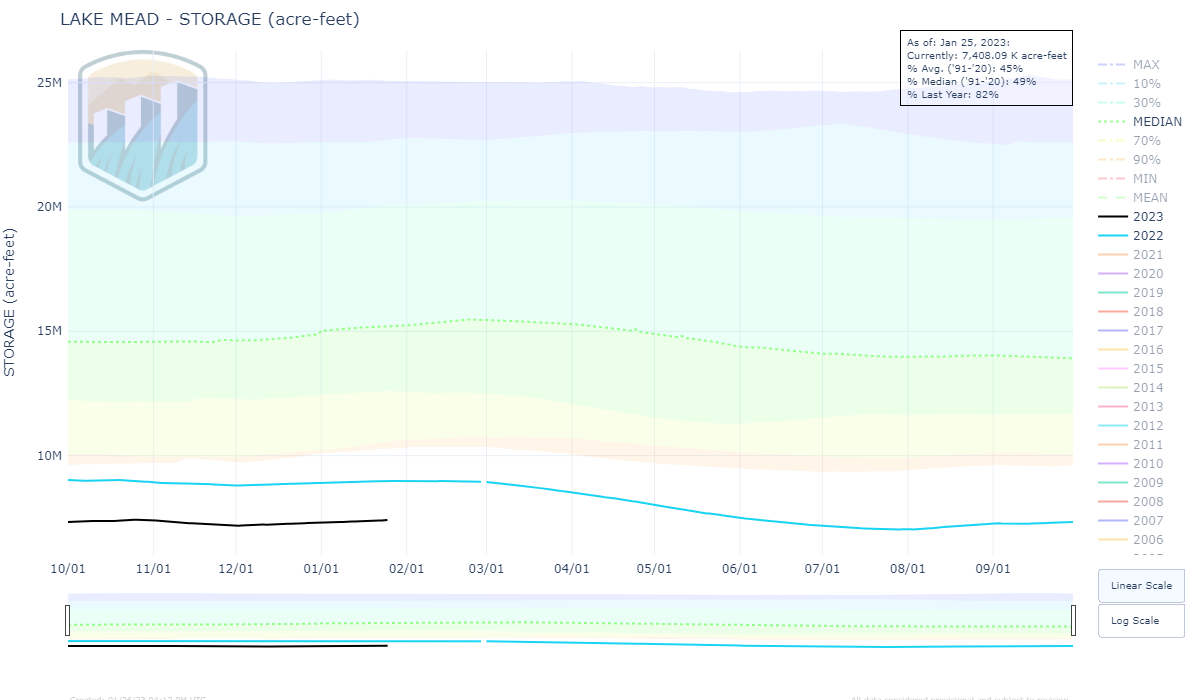
For Lake Mead, the current percentage of normal storage is 45%.
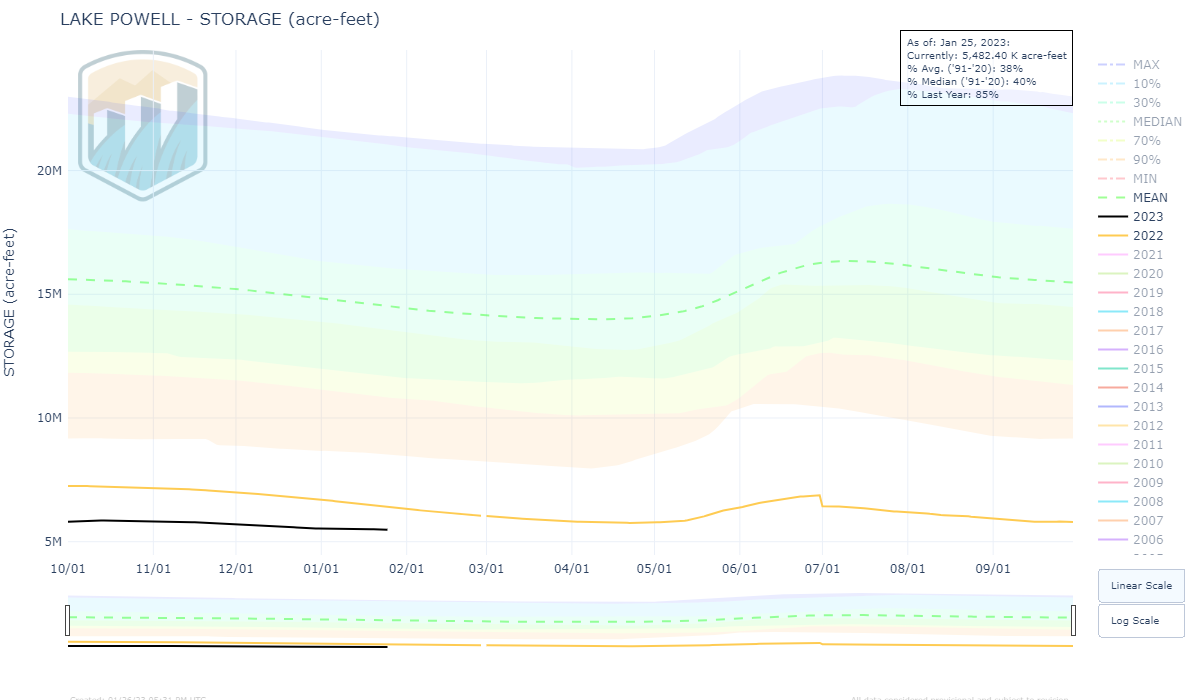
For Lake Powell, the current percentage of normal storage is 38%.
Looking at Colorado's reservoir situation, we have below normal storage pretty much statewide.

So, we have a long ways to go still from a drought, snowpack, and water supply standpoint despite the recent atmospheric river events.
The forecast? Another atmospheric river event could pick up again in early to mid-February, but that's far from certain. Until then we do have some moisture for the West but it'll be mostly in the central and Northern Rockies where we need that snowfall as discussed above.
Precipitation estimates to come through the next week are shown below.
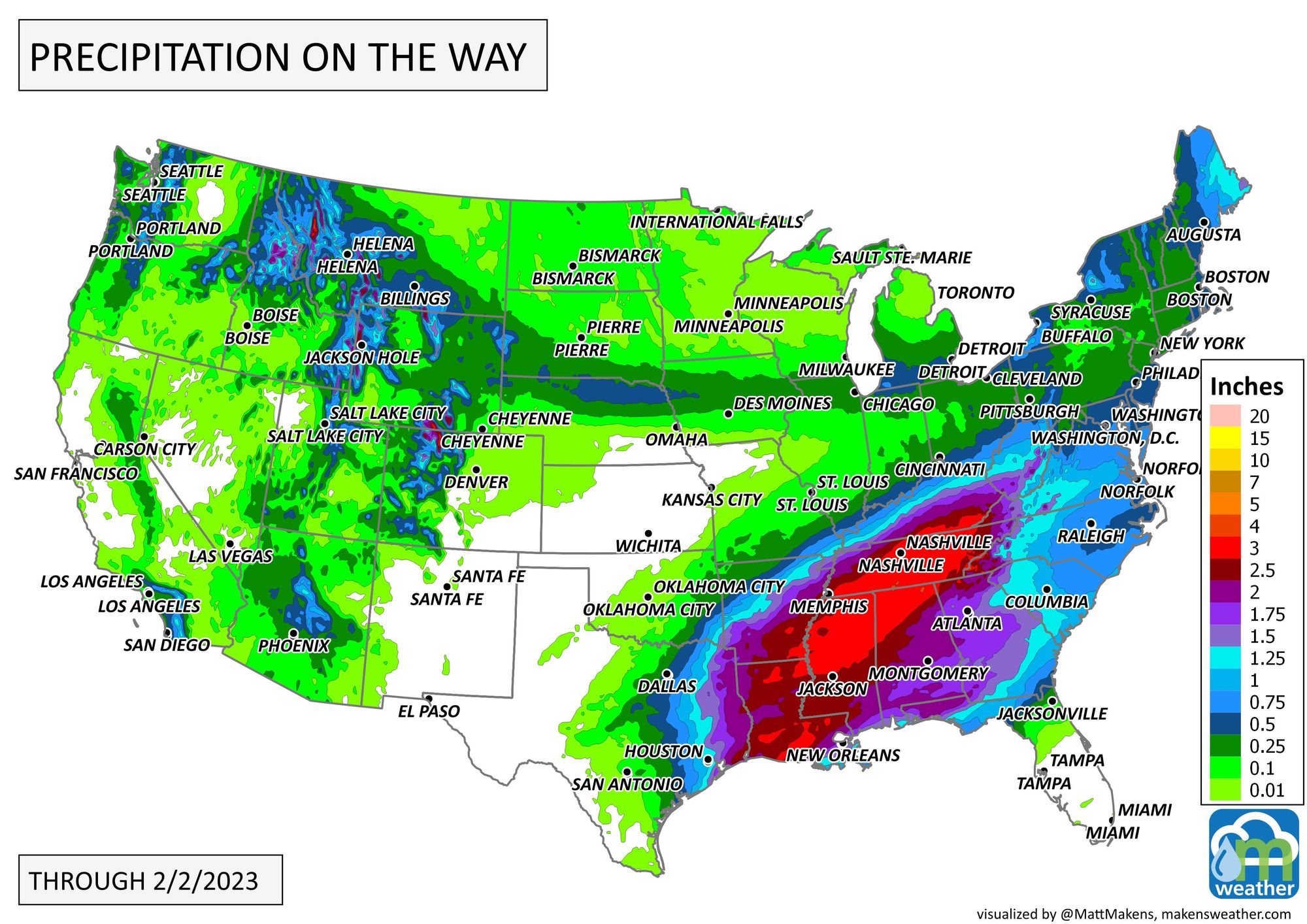
Bottom line: We have had a tremendous amount of water delivered to the West with benefits to our short-term drought and snowpack, however a long-term drought remains and a lot more water will be needed to recover drought levels and refill struggling reservoirs.
